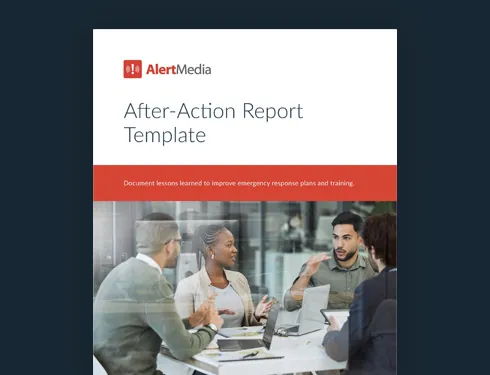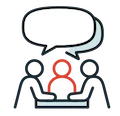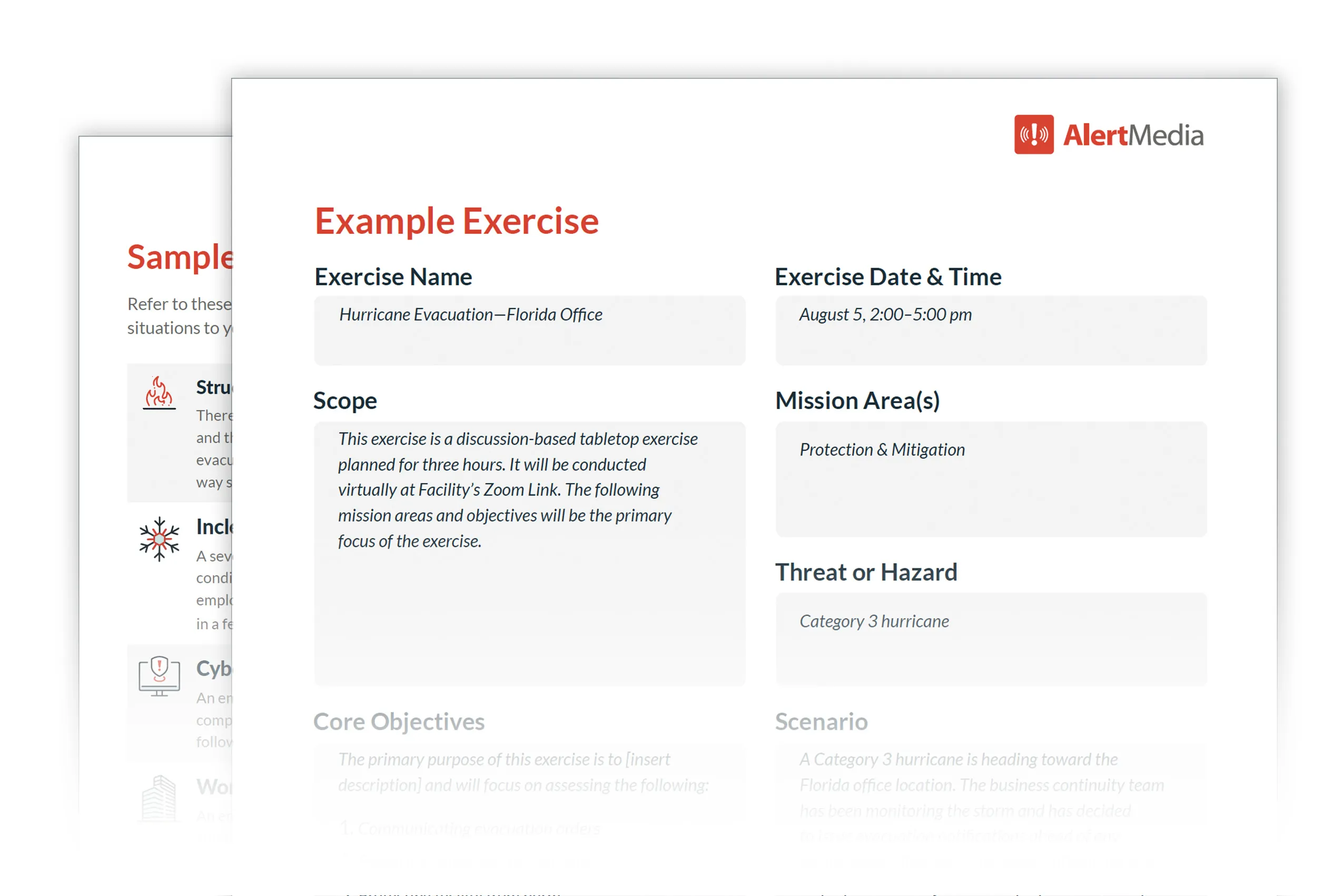
What Is a Hot Wash? It’s Not Just for the Military
Start learning from an emergency and improving your response before the dust even settles. Learn how to run a hot wash and make the most of your time after a disaster situation.

A hot wash is an after-action review. This military-born strategy is all about conserving the one resource even the world’s most well-funded defense department can’t get more of—time. By going over a drill or emergency response right after it happens, you better understand your capabilities. Memories are still fresh, and issues are clear. While the urge may be to let things settle before starting your after-action report, that time after an incident or exercise is a finite resource you can use to improve. A hot wash is designed to help you do just that.
After-Action Report Template
What Is a Hot Wash?
While these after-action reviews are more widely used today, at its core, a hot wash is a military strategy involving an informal debriefing to capture key insights following an emergency or drill. There are disputes about its origin, but most believe it started in the U.S. Army. The term “hot wash” stemmed from soldiers using extremely hot water to clean their weapons immediately following an exercise or mission.
Dirt and grit would get on their weapons and equipment during the mission. The longer it sat, the harder it was to remove—and the more likely it was to cause a misfire later. Immediately dousing the weapon in hot water removed the worst of the debris without the soldier needing to break it down.
Over time, that practice evolved into a debriefing strategy. Immediately following a mission or drill, those directly involved would meet to review observations and lessons. The goal is speed. Capture the immediate lessons and save the deeper analysis for later. Much like the soldiers hot washing their weapons, they worry about the big debris without getting into the nitty gritty. The emergency preparedness community has picked up and used this process for disaster planning and response reviews.
 Hot wash vs. after-action review
Hot wash vs. after-action review
Hot washes and after-action reviews are technically the same, though the AAR builds on the basic components of a hot wash. A hot wash is an informal process that’s more agile than structured after-action reviews. Below are some key differences between the two.
| Hot wash | After-action review |
|
|
Hot Wash FAQ
- Is "hot wash" included in official emergency management glossaries or standards? Yes. “Hot wash” is recognized in several professional and governmental glossaries, including those from FEMA, the U.S. Department of Homeland Security, and the National Incident Management System (NIMS). These sources typically define it as an immediate after-action discussion to capture initial observations following an exercise or incident. While the term originated in military circles, its adoption into civilian emergency management frameworks underscores its importance in structured response and recovery processes.
- What types of incidents warrant a hot wash? Hot washes are valuable after any incident involving a coordinated response—emergency drills, natural disasters, cybersecurity breaches, supply chain disruptions, or even a corporate crisis. If there’s something to learn, it’s worth a hot wash.
- How soon after an incident should a hot wash be held? Ideally, within 24 to 72 hours. The goal is to capture fresh insights before details fade or routine operations resume fully.
- What’s the role of leadership during a hot wash? Leaders should take a backseat unless they were involved in the response. This encourages candor and reduces the risk of defensive feedback. Their involvement is better suited for follow-up AAR sessions.
- How can you encourage honest feedback during a hot wash? Create psychological safety. Use neutral facilitators, anonymize feedback when needed, and set expectations around blame-free discussion. You want to reinforce that the goal is process improvement—not personal criticism.
- How does a hot wash support business continuity planning? Hot washes reveal vulnerabilities and strengths in response procedures that directly impact continuity. Regularly incorporating hot wash insights into business continuity plans leads to more resilient operations.
How to Run a Hot Wash Meeting
The hot wash follows the same format as an AAR; it’s just a more consolidated version. Like a formal after-action review, the hot wash should cover four components: recap, review, analysis, and improvements.
- Recap: What was supposed to happen?
- Review: What actually happened?
- Analysis: What did you do right?
- Improvements: What could you do better?
While speed is critical in a hot wash, you’ll still want to do some prep beforehand to cover those four components. Here’s how to run a hot wash meeting.
1. Establish your intent
The primary purpose of a hot wash is to examine the strengths and weaknesses of your response to an emergency drill or actual emergency immediately after it happens. You may want to review a specific aspect of the exercise or emergency event rather than the entire thing. Make the scope of your hot wash clear from the very start to ensure all participants focus on the right objectives.
Setting up a loose agenda built on the four components above can help to guide your discussion and keep it on point. Just keep in mind that hot washes are supposed to be collaborative. If you make the agenda too structured, you may stifle the free flow of ideas. Use the agenda to keep you on target, not to dominate the conversation. Building it on those four key objectives—recap, review, analysis, and improvement—gives your discussion an unrestricted framework that encourages discourse.

2. Identify your key parties
While a formal after-action review calls for all stakeholders, the hot wash expedites this by including only directly involved parties. Invite anyone who played a role in planning, executing, or managing the emergency to participate.
You will also need a facilitator. This person will guide the discussion, keep everyone on point, and collect feedback. It’s typically best to have a facilitator who wasn’t directly involved in the emergency response, drill, or tabletop exercise to keep it unbiased.
3. Set an accessible location
The location of your hot wash should foster collaboration and open discussion. One great option is a remote meeting. This virtual setting allows individuals to participate from anywhere, and you can integrate other tools to help facilitate an organized discussion. Whether in-person or virtual, remember to keep the location accessible, comfortable, and free of distractions.
4. Gather pertinent data
Data can help improve your hot wash’s results, but it should not take precedence over speed. Focus on the big-picture information like timelines, performance data, incident reports, and feedback or surveys. The most important data from your hot wash should be the feedback you obtain from the parties involved, so prioritize active participation over printouts and charts.
5. Set basic ground rules
The hot wash is designed to be a free-flowing exchange of information. You don’t want to stifle that by weaving in too many rules, but you should ensure everyone feels like they have a voice. Here are some basic rules to include.
- Focus on processes and systems, not people: The emphasis of the “what we did wrong” portion of a hot wash should not be about finding a scapegoat. It should be about what processes or systems did not work efficiently.
- Highlight what you did right: Pointing out what was done right keeps the conversation positive, but it can also be a tool for improvement. If communication is a strength, for example, it could solve one or more of your weaknesses.
- Anonymize comments when appropriate: If the answer to a question could cause an awkward situation, like a team member being asked to give feedback on a supervisor, a facilitator should collect the answers from the parties involved and anonymize them. This approach encourages candor, even around difficult questions.
- Request a problem/solution format: If someone disagrees with a proposed solution or insight, they should offer an alternative. The “no problems without a solution” rule keeps the meeting from going into negative territory that isn’t productive.
- Keep the focus on one topic at a time: While the idea encourages brainstorming, you don’t want to get lost in the weeds as individuals introduce new ideas without resolving the discussion of another idea. Keep the focus on a topic until a decision is made, and then move on to the next one.
- Allow mixed-response formats: Some of your team members may not be the type to speak up in a large group setting, and your feedback may represent only the views of your more extroverted participants. Consider adding options to submit feedback via instant message, text, or email as an alternative means of communication.
6. Write your hot wash report
You can capture the details from your hot wash in an after-action report to help guide future responses. The AAR can go over those four questions—recap, review, analysis, and improvements—and cover the key action items and who is responsible for them. It’s typically best to use a hot wash template to get as many details as possible from your initial insights and then expand on them later.
You should share the results of your hot wash in a digestible format. Cover the key insights and action items that will help you improve going forward. It’s less important that people know how you came to certain conclusions; they must understand the constructive lessons learned. That keeps the process transparent and on target and helps instill a safety culture throughout your organization.
How Hot Washes Helped a Hospital Improve Communication
The goal of a hot wash isn’t to be highly detailed or complicated. It’s to capture the critical points that need the most attention. In an episode of The Employee Safety Podcast, we see how a hot wash can be used to quickly gain insights into one of the most critical points of our infrastructure—hospitals.
Flexibility is vital for the team at Valley View Hospital, a facility in a challenging geographical location in western Colorado. The hospital has a single major highway that feeds into it, meaning evacuations during the mudslides and wildfires that plague the region are a particular challenge.
With the pass closing more than five times a year for extended periods, Josh Anderson—Manager of Safety, Security, and Emergency Management at Valley View Hospital—has much experience conducting hot washes. These after-action improvement plans, modeled after the Department of Homeland Security’s after-action review template, have helped him discover and close gaps in their communications that made it more challenging to respond to road closures and evacuations. As a result, he’s finding that those communication issues are showing up less and less on subsequent reports.
Well-planned hot washes lead to continuous improvement. When you make them a habit and focus on objectives and immediate results, you capture insights you may have missed otherwise. These sessions pave the way for better disaster response.
Making the Most of the Time You Have With an Expedited AAR
While the hot wash has military origins, it’s a strategy that applies across industries. It allows you to remove the “debris” after an emergency and reflect while responses are still fresh in your mind. You may not be able to get more time during or after an emergency or drill, but a hot wash will help you make the most of it with improved emergency preparedness and risk management.





